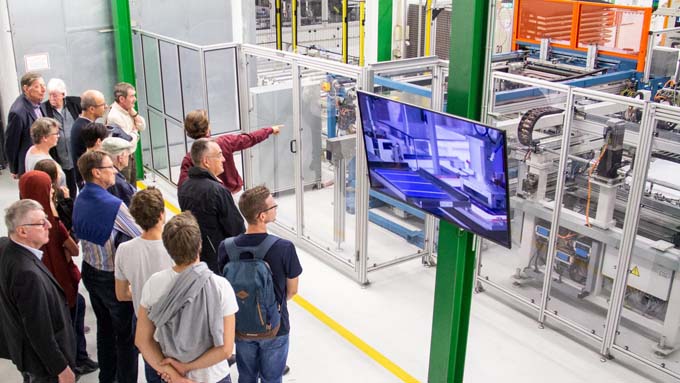Waste recycling plants implement net-zero strategy
The 29 waste-to-energy plants in Switzerland want to start implementing the net-zero strategy in concrete terms. Thanks to new technologies for the capture and permanent storage of CO2, their emissions are to drop to zero in the long term and even become negative.

The Federal Council's climate targets stipulate that, from 2050, Switzerland should not emit more greenhouse gases into the atmosphere than are absorbed by natural and technical reservoirs. The waste incineration plants (MWIP) have an important role to play here. They are responsible for 5 percent of Switzerland's total CO2 emissions. In the future, however, new technologies will make it possible to capture and permanently store CO2 produced during waste incineration. This will reduce CO2 emissions from MSW to zero. The capture of emissions from the biogenic fraction of waste (waste wood) also leads to a reduction in the CO2 concentration in the atmosphere (negative emissions) when stored permanently.
Capture and storage of CO2
In order to achieve the net zero target, technologies for the capture and storage of CO2 (carbon capture and storage, or CCS) must be used. In particular, all MSWIs should be equipped with carbon capture in the longer term. At the same time, the safe and permanent storage of several million tons of CO2 per year must be ensured. The Association of Operators of Swiss Waste Utilization Plants (VBSA) and its MSWI members are rising to this challenge and want to start immediately with the practical implementation of the ambitious climate policy goals. In a new industry agreement with the Federal Department of the Environment, Transport, Energy and Communications (DETEC), they outline how they intend to proceed in concrete terms.
Common goal of waste recycling plants and DETEC
In the agreement signed by Federal Councillor Simonetta Sommaruga and VBSA President Bastien Girod, the waste recyclers commit to investing CHF 1 million annually in CCS technologies. In addition, the association commits to commissioning a first capture plant with a capacity of 100,000 tons of CO2 by 2030 at the latest. In return, the MWIPs will continue not to participate in the emissions trading system. VBSA and DETEC have agreed on a roadmap with specific annual milestones. "Thanks to this agreement, we will set the course for building the necessary climate protection infrastructure. Together with DETEC, the cantons, universities and industry, MWIP is doing pioneering work here. We have set ourselves very ambitious goals, but I am confident that we can achieve them," says National Councilor Bastien Girod, President of VBSA.
A generational task
Before the first capture plant goes into operation at a MWIP, the CCS technology must be further developed and adapted to the specific conditions of a MWIP. In parallel, an infrastructure must also be built to transport and permanently store the CO2. In addition, all these developments must be quickly scalable: After 2030, the amount of CO2 captured must increase rapidly, to 400,000 tons by 2035, and by 2050, the technology must also be applied in the rest of industry and capture 7 million tons, according to the Federal Council. "Building this new type of climate protection infrastructure is a generational task, comparable in its considerable scale to the development of wastewater treatment in the last century," says Robin Quartier, director of the VBSA.
Review of the achievement of objectives
DETEC will closely monitor the implementation of the agreement and review compliance with the defined objectives and interim targets on the basis of VBSA's annual reporting. If this review shows that the defined targets cannot be met, the parties may terminate the agreement.









